CAA News Today
CAA Statement on Mosul Museum Destruction
posted by Christopher Howard — February 26, 2015
CAA abhors the senseless destruction of ancient Assyrian sculpture that was publicized today. The Assyrians created sophisticated monumental sculpture that reflected their unique form of government, fostered urban development projects of palaces, temples and markets, built a prosperous economy and promoted reading and writing in cuneiform. The monumental works from this extraordinary ancient civilization had been preserved for over 2,500 years in one of the most important collections of Middle Eastern art, the Mosul Museum. CAA calls upon the Iraq and United States government as well as the ICOMOS, the World Monuments Fund and other international organizations to adhere to Hague Convention (1954), in concert with the public and the scholarly community, to develop and implement programs to protect ancient sites, monuments, antiquities, and cultural institutions in the case of war.
DeWitt Godfrey, CAA President
Linda Downs, Executive Director
Membership Categories and Conference Registration
posted by Nia Page — February 26, 2015
This past spring CAA restructured its membership program in order to provide more options and better serve its members. CAA added new benefits such as online access to The Art Bulletin and Art Journal as well as discounted access to JPASS. CAA also added new, discounted membership categories for part-time faculty and independent artists and scholars. These changes were made in direct response to important feedback from CAA members.
The four income-based levels of membership that CAA used for many years were replaced by two general categories: Basic and Premium. The Basic level ($125 a year) provides a lower-cost option for members who aren’t planning to attend the Annual Conference. If they do attend, Basic members receive a 20 percent discount on registration. The Premium level ($195 a year) costs a bit more but offers a much greater value for conference attendees: a 55 percent registration discount.
CAA communicated this information through letters, eblasts, a presentation on CAA’s YouTube Channel, and an Individual Member Guide and member FAQs posted on the website. We have since learned from members, however, that some confusion has arisen over the new membership categories and their respective benefits related to conference discounts.
We are in the process of reviewing and updating the Membership section of the website, and we will aim to be clearer in member correspondence throughout the year. Please keep in mind that if you are renewing your membership and you know at that time that you will attend the Annual Conference, the Premium membership with its larger conference registration discount will provide you with the greatest overall value when combined with the conference cost.
If you ever have any questions about your membership, please do not hesitate to contact us at membership@collegeart.org. Thank you for your continued support of CAA.

John Richardson, CAA Vice President for External Affairs
Professor and Chair, Department of Art and Art History, Wayne State University
News from the Art and Academic Worlds
posted by Christopher Howard — February 25, 2015
Each week CAA News publishes summaries of eight articles, published around the web, that CAA members may find interesting and useful in their professional and creative lives.
Why Is Art So Expensive?
I recently went to a gallery and saw pieces of broken glass selling for $1,000 per shard. Why? And why is art so expensive? (Read more from Slate.)
The Academy’s Dirty Secret
According to a new study that scrutinized more than 16,000 faculty members at 242 schools, just a quarter of all universities account for 71 to 86 percent of all tenure-track faculty in the US and Canada in business, computer science, and history. Just eighteen elite universities produce half of all computer-science professors, sixteen schools produce half of all business professors, and eight schools account for half of all history professors. (Read more from Slate.)
How to Start an Art School
There are plenty of examples out there, from fly-by-night, for-profit scoundrels to august, ivy-draped centuries-old institutions. Why not just join one of them rather than go through the trouble of starting something new? Unfortunately, the current model for art school is awful. Let us count the ways, easily summed in dollars. (Read more from Momus.)
Do Artist Branding and Hollywood Talent Agency Deals Kill an Artist’s Soul?
Many of us have seen the Andy Warhol Converse sneakers and the Uniqlo t-shirts adorned with famous artworks. We’ve seen the painted BMW cars and the branding of vodka bottles. If artists want to put their signature squiggles on a shoe or a bottle of booze, are they compromising their integrity in exchange for a bit of cash? (Read more from Artnet News.)
US Museums Capitalize on Baby Boomers’ Desire to Write Big Checks
Cultural giving among America’s top philanthropists fell slightly in 2014, according to the Chronicle of Philanthropy’s annual ranking of the fifty largest charitable donors. The news might come as a surprise to US museum directors, who have been swiftly and quietly raising eight-, nine-, and ten-figure donations from eager patrons. Their ambitious capital campaigns make the austerity measures of the recent recession feel like a distant memory. (Read more from the Art Newspaper.)
From the Journal Editor’s Vantage Point
We could spend a lot of time discussing why academic journals accept so few manuscripts at the outset. Having satirized the peer-review process myself, I would be the first to acknowledge that it’s far from perfect. But pragmatically speaking, it’s important to realize that if you receive a revise-and-resubmit and decide to cut your losses and move on to another journal, you’re likely to face exactly the same outcome. (Read more from Vitae.)
We Need More STEM Majors with Liberal Arts Training
Our culture has drawn an artificial line between art and science, one that did not exist for many innovators. Leonardo da Vinci’s curiosity and passion for painting, writing, engineering, and biology helped him triumph in both art and science. And Steve Jobs once declared: “It’s in Apple’s DNA that technology alone is not enough—it’s technology married with liberal arts, married with the humanities, that yields us the result that makes our heart sing.” (Read more from the Washington Post.)
Yale to Launch Lens Media Lab for Photograph Research and Conservation
The Lens Media Laboratory, a new research facility that will apply scientific principles to the characterization and conservation of photographs and other lens-based media, has been created as part of the Yale Institute for the Preservation of Cultural Heritage, a center dedicated to improving the science and practice of conservation globally. (Read more from Yale News.)
Millard Meiss Publication Fund Seeks Three Jury Members
posted by Betty Leigh Hutcheson — February 24, 2015
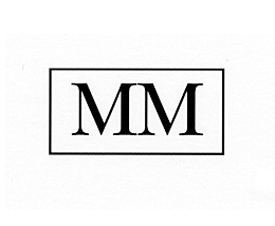 CAA seeks nominations and self-nominations to fill three positions on the jury for the Millard Meiss Publication Fund for a four-year term, July 1, 2015–June 30, 2019. Candidates must be actively publishing scholars with demonstrated seniority and achievement; institutional affiliation is not required.
CAA seeks nominations and self-nominations to fill three positions on the jury for the Millard Meiss Publication Fund for a four-year term, July 1, 2015–June 30, 2019. Candidates must be actively publishing scholars with demonstrated seniority and achievement; institutional affiliation is not required.
The Meiss jury awards grants twice a year to support the publication of book-length scholarly manuscripts in the history of art, visual studies, and related subjects that have been accepted by a publisher on their merits but cannot be published in the most desirable form without a subsidy. CAA reimburses jury members for travel and lodging expenses in accordance with its travel policy.
Candidates must be current CAA members and should not be serving on another CAA editorial board or committee. Jury members may not themselves apply for a grant in this program during their term of service. Nominators should ascertain their nominee’s willingness to serve before submitting a name; self-nominations are also welcome. Please send a letter describing your interest in and qualifications for appointment, a CV, and contact information to: Millard Meiss Publication Fund Jury, College Art Association, 50 Broadway, 21st Floor, New York, NY 10004; or send all materials as email attachments to Sarah Zabrodski, CAA editorial manager. Deadline: May 1, 2015.
Teaching the History of Modern Design: The Canon and Beyond
posted by Christopher Howard — February 23, 2015
Teaching the History of Modern Design: The Canon and Beyond
NEH Summer Institute
Drexel University, Philadelphia, Pennsylvania
July 6–July 31, 2015
“Teaching the History of Modern Design: The Canon and Beyond” is an exciting four-week NEH Summer Institute that will prepare twenty-five college faculty from diverse disciplinary backgrounds to meet the increasing demand for, as well as interest in, courses on modern design history. In-depth seminars will focus upon three interdependent thematic units: (1) taste and popular culture; (2) women as consumers and producers of design; and (3) political and global interpretations of design after World War II.
The director’s and visiting scholars’ complementary approaches to “The Canon and Beyond” will build upon and reinforce participants’ familiarity with standard material, while simultaneously introducing new material and critical perspectives. Field trips to regional museums and collections such as the Philadelphia Museum of Art and the Hagley Museum in Delaware will provide participants direct experience with objects and suggest ways to use local collections in their own teaching. Group presentations by our participants will take place during the final week of the institute.
Application deadline: March 2, 2015
Notification date: March 30, 2015
Stipend: $3,300
Visiting scholars: Regina Lee Blaszczyk, University of Leeds, England; Maria Elena Buszek, University of Colorado, Denver; Catharine Rossi, Kingston University, England; Sarah Teasley, Royal College of Art, London; and Vladimir Kulic, Florida Atlantic University.
Project faculty: Carma R. Gorman, University of Texas at Austin
Institute director: David Raizman, Drexel University
Solo Exhibitions by Artist Members
posted by CAA — February 22, 2015
Solo Exhibitions by Artist Members
See when and where CAA members are exhibiting their art, and view images of their work.
Solo Exhibitions by Artist Members is published every two months: in February, April, June, August, October, and December. To learn more about submitting a listing, please follow the instructions on the main Member News page.
February 2015
Abroad
Lea Kannar-Lichtenberger. Community Gallery, Hazelhurst Regional Gallery and Arts Centre, Gymea, New South Wales, Australia, March 7–17, 2015. Colliding Worlds. Bio-art.
Mid-Atlantic
Lorrie Fredette. Visual Art Center of New Jersey, Summit, New Jersey, February 8–May 31, 2015. Proper Limits. Installation.
Midwest
Michael Aurbach. Main Galleries, Tarble Arts Center, Eastern Illinois University, Charleston, Illinois, January 16–February 18, 2015. Michael Aurbach Sculpture: Three Decades after Eastern. Sculpture.
Joan Marie Kelly. Richard D. Baron ’64 Art Gallery, Oberlin College, Oberlin, Ohio, November 21, 2014–January 2, 2015. Historical Indian Archetypes of Masculinity and Femininity: The Kotha and The Akhara.
Angela Piehl. North Gallery, Oklahoma State Capitol, Oklahoma City, Oklahoma, December 8, 2014–February 1, 2015. Stillwater. Drawing.
Robert Schatz. Sheldon Museum of Art, University of Nebraska, Lincoln, Nebraska, January 16–April 26, 2015. A New Line of Thinking. Sculpture and work on paper.
Northeast
Nayda Collazo-Llorens. LMAKprojects, New York, October 17–December 21, 2014. Dis/connect. Wall installation, drawing, and work on canvas.
Josette Urso. Main Window Project Space, One Main Street, Brooklyn, New York, February 5–March 29, 2015. High Five.
Josette Urso. Market Fine Arts, New York, March 19–April 18, 2015. Treehouse. Painting.
West
Martin Gantman. Los Angeles Center for Digital Art, Los Angeles, California, January 8–February 28, 2015. Inconsequential Intersections.
Join CAA in Supporting Part-Time Faculty
posted by Linda Downs — February 20, 2015
On the occasion of the National Adjunct Walkout Day planned for February 25th CAA asks visual arts tenured faculty and faculty administrators to review, discuss with your colleagues, and implement the CAA Guidelines for Part-Time Professional Employment. These guidelines provide the consensus on best practices in the visual arts in hiring, contracting, providing resources, working space, information, professional development, equitable salaries, and opportunities to participate in institutional government. We particularly encourage full-time tenured faculty and administrators to revisit these guidelines and discuss them toward full implementation at your institution.
The CAA Strategic Plan, 2015–2020 has placed part-time faculty issues as a priority. At the February 15th Board of Directors meeting, a task force on advocacy has been formed to address part-time faculty issues along with diversity in the field, and the public face of art and art history. As part of this effort, we will be surveying visual-arts departments to determine where we stand on these issues and how best to move forward.
DeWitt Godfrey, CAA President
Professor of Art and Art History
Colgate University
Linda Downs
Executive Director and CEO
News from the Art and Academic Worlds
posted by Christopher Howard — February 18, 2015
Each week CAA News publishes summaries of eight articles, published around the web, that CAA members may find interesting and useful in their professional and creative lives.
The Tall Task of Unifying Part-Time Professors
Robert Yoshioka, a representative of the California Part-Time Faculty Association, is one of many who are agitating for better wages and greater job security for adjunct, part-time, and contingent faculty, who often don’t know whether they’ll be hired back until a few weeks before the semester starts. But as he and his fellow activists prepare for a National Adjunct Walkout Day on February 25—the first nationwide protest of its kind—he is running into a problem: it’s hard to organize a loose collection workers who are hired and fired at will. (Read more from the Atlantic.)
Excuses, Excuses
What’s the most common reason people who want to attend the arts don’t follow through? Time. Or, more accurately, the lack of it. Not surprised? According to the American Time Use Survey, 95 percent of Americans over the age of fifteen participate in leisure activities for an average of five hours a day. Nonetheless, the perception that they lack time keeps them from participating in a host of available activities, and the arts are no exception. (Read more from the National Arts Marketing Project.)
The Art of Twitter Art
Welcome to the world of Twitter art, a whimsical, boundless space dominated by image-generator bots and ASCII character codes and hand-drawn cartoons. Twitter art appears unexpectedly in streams. Twitter art is experimental. Twitter art even interacts with other Twitter art. But Twitter art’s creators face a tricky challenge: they work on a site designed primarily for posting limited text, so users rarely stop and stare at tweets the way they might pause to appreciate other visual-art forms. (Read more from the Atlantic.)
The Rise and Fall of a Midwestern Art Magazine
In 1973 Derek Guthrie was fired as an art critic from the Chicago Tribune. There was “under-the-table censorship” occurring, as he called it in his introduction to the recent New Art Examiner Anthology. Chicago, by many accounts, was a cultural backwater. Why not just move to New York and fall in with like-minded individuals in a thriving art scene? Why did he stay in Chicago and found the New Art Examiner? (Read more from F Magazine.)
92 Percent of College Students Prefer Reading Print Books to Ereaders
Despite the embrace of ebooks in certain contexts, ereaders remain controversial. Many people just don’t like them: ereaders run out of battery, they hurt your eyes, and they don’t work in the bath. After years of growth, sales are stagnating. In 2014, 65 percent of six- to seventeen-year-old children said they would always want to read books in print—up from 60 percent two years earlier. (Read more from the New Republic.)
What’s Wrong with the Public Intellectual?
For years, the undigitized gem of American journals had been Partisan Review. Last year its guardians finally brought it online. Some of its mystery has been preserved, insofar as its format remains hard to use, awkward, and hopeless for searches. Even in its new digital form it retains a slightly superior pose. (Read more from the Chronicle Review.)
Is a New Artistic Activism Emerging via Social Media and Forms of Public Protest?
Recent world crises have elicited an unprecedented response on social media and brought on new forms of artistic protest. Think of the brave Mexican artists who have been standing naked in public to protest student killings, shared everywhere online, or take a look at the pictures below for a visual recap of other artistic protest projects over the past few months. They got me thinking: is a new artistic activism emerging via social media and forms of public protest? (Read more from Artnet News.)
Museum Rules: Talk Softly, and Carry No Selfie Stick
In a famous lab trial, a chimp named Sultan put two interlocking sticks together and pulled down an elusive prize, a bunch of bananas hanging just out of arm’s reach. Nearly a century later, eager tourists have conducted their own version of the experiment. Equipped with the camera extender known as a selfie stick, occasionally referred to as “the wand of narcissism,” they can now reach for flattering CinemaScope selfies wherever they go. (Read more from the New York Times.)
People in the News
posted by CAA — February 17, 2015
People in the News lists new hires, positions, and promotions in three sections: Academe, Museums and Galleries, and Organizations and Publications.
The section is published every two months: in February, April, June, August, October, and December. To learn more about submitting a listing, please follow the instructions on the main Member News page.
February 2015
Academe
Hala Auji has been appointed assistant professor of Islamic art in the Department of Fine Arts and Art History at the American University of Beirut in Lebanon.
Museums and Galleries
Denise Allen has left the Frick Collection in New York for the Metropolitan Museum of Art, also in New York, where she is curator of European sculpture and decorative arts.
Elissa Auther, associate professor of contemporary art and director of the art-history and museum-studies program at the University of Colorado in Colorado Springs, has joined the Museum of Arts and Design in New York as the inaugural Wingate Research Curator. She will hold a joint appointment at the Bard Graduate Center, in collaboration with the Center for Craft, Creativity, and Design.
Robert C. Hobbs, Rhoda Thalhimer Endowed Chair at Virginia Commonwealth University in Richmond and visiting professor at Yale University in New Haven, Connecticut, has been inducted as a trustee of the Wadsworth Atheneum Museum of Art in Hartford, Connecticut.
Organizations and Publications
Dena Muller has been appointed executive director of the Cue Art Foundation in New York. Previously she had served the New York Foundation for the Arts as director of new initiatives.
Institutional News
posted by CAA — February 17, 2015
Read about the latest news from institutional members.
Institutional News is published every two months: in February, April, June, August, October, and December. To learn more about submitting a listing, please follow the instructions on the main Member News page.
February 2015
The Sterling and Francine Clark Art Institute in Williamstown, Massachusetts, has won the 2014 Apollo Award for Museum Opening of the Year. The award is given annually by the art magazine Apollo.
The Minneapolis Institute of Arts in Minnesota has accepted an $8 million gift from the Duncan and Nivin MacMillan Foundation to endow the director and president’s position.
The Princeton University Art Museum in Princeton, New Jersey, has won the 2014 Frances Smyth-Ravenal Prize for Excellence in Publication Design from the American Alliance of Museums for its catalogue of the exhibition New Jersey as Non-Site.
Yale University Press in New Haven, Connecticut, has received an $840,000 grant from the Andrew W. Mellon Foundation to establish a new electronic portal on which curated and customizable art and architectural-history content will be made available to consumers and institutions.




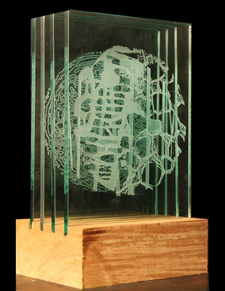 Lea Kannar-Lichtenberger, Glimpse Beyond, 2014, sandblasted glass panels in PNG Rosewood (artwork © Lea Kannar-Lichtenberger)
Lea Kannar-Lichtenberger, Glimpse Beyond, 2014, sandblasted glass panels in PNG Rosewood (artwork © Lea Kannar-Lichtenberger)
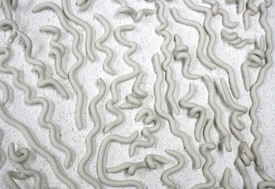 Lorrie Fredette, ceiling detail of Proper Limits, 2015, porcelain, 8 ft. 1 in. x 17 ft. 10½ in. x 18 ft. 3½ in. (artwork © Lorrie Fredette)
Lorrie Fredette, ceiling detail of Proper Limits, 2015, porcelain, 8 ft. 1 in. x 17 ft. 10½ in. x 18 ft. 3½ in. (artwork © Lorrie Fredette)

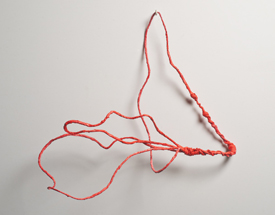 Robert Schatz, Lotus, 2014, jute twine, alphatic resin, kozo paper, and acrylic, 14 x 8 x 19½ in. (artwork © Robert Schatz)
Robert Schatz, Lotus, 2014, jute twine, alphatic resin, kozo paper, and acrylic, 14 x 8 x 19½ in. (artwork © Robert Schatz)
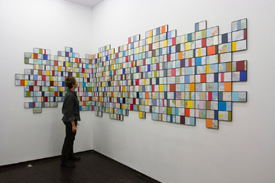 Nayda Collazo-Llorens, installation view of Geo Dis/connect, 2014, wall installation with found maps, 360 framed images (4 x 6 in. each), overall dimensions approximately 5 x 16 ft. (artwork © Nayda Collazo-Llorens)
Nayda Collazo-Llorens, installation view of Geo Dis/connect, 2014, wall installation with found maps, 360 framed images (4 x 6 in. each), overall dimensions approximately 5 x 16 ft. (artwork © Nayda Collazo-Llorens)
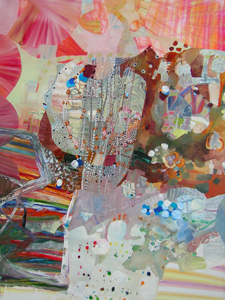 Josette Urso, Jujube, 2015, oil on canvas, 48 x 36 in. (artwork © Josette Urso)
Josette Urso, Jujube, 2015, oil on canvas, 48 x 36 in. (artwork © Josette Urso)
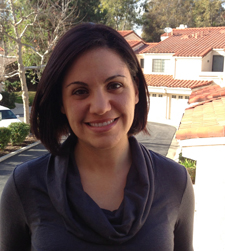 Hala Auji
Hala Auji